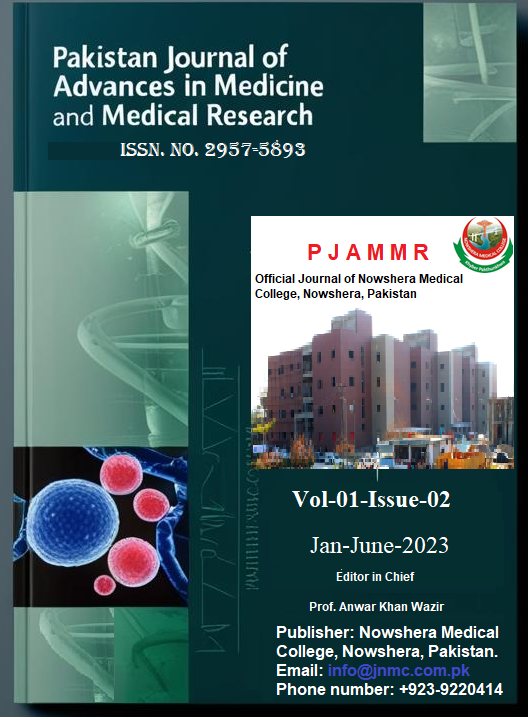Conventional Percutaneous Nephrolithotomy (PCNL) Complications Rate in a Tertiary Care Center.
Original Article
DOI:
https://doi.org/10.69837/pjammr.v1i02.10Abstract
Background: Assess The Complication Rate Of Conventional Percutaneous Nephrolithotomy In A Tertiary Care Hospital (PCNL).
Study design: A Retrospective observational study.
Place and duration of study: Department Urology Lady Reading Hospital In Peshawar, Pakistan, From 05- January 2016 To 05- January 2020
MATERIALS AND METHODS: 439 patients with regular panels underwent the study. Before non-contrast, C.T. kub was used on all subjects. The patient was lying flat after the 6-fr ureteric catheter was inserted in the lithotomy position. All prone procedures using 30fr am plating sheaths were directed by fluoroscopy. Hydraulic lithoclasts broke the stone. All nephrostomy tubes were Foley devices with a 16-fr size. Six physicians performed these operations with four years of penal experience. Postoperative problems were evaluated using an adapted Cloven rating method.
Results: There were problems with 46.9%. 54 (12%) and (120) grade I and II clavier problems were discovered. 67 (15%) stage I patients with transient temperature were treated with antipyretics. 53 (12%) patients used supine pressure bands to treat nephrostomy site leakage. 9 (2%) of the grade II issues needed IV antibiotics for sepsis, and 45 (10%) required blood transfusions. Extended hemorrhage occurred in 4 (0.8%) patients who underwent percutaneous angioembolization and 6 (1.2%) patients who underwent perinephric collection drainage. One (0.2%) patient had a colostomy, and 24 (5.3%) patients with persistent nephrostomy leakage or PCS injury underwent D.J. stenting. I was all right with Intensity IV. 0.4% of fatalities were due to severe bleeding.
Conclusion: Percutaneous nephrolithotomy is economical, risk-free, and well-tolerated. Minor problems like brief temperature and nephrostomy site leaks usually go away independently. The degree of complexity has been reduced to almost nothing due to the shrinking size of Pcnls from conventional to mini, ultra-mini, and micro.
Keywords: Complications, Tertiary Care, Percutaneous Nephrolithotomy, Conventional
Downloads
Published
How to Cite
Issue
Section
License
Copyright (c) 2023 Sami Ullah, Muhammad Asif, Naveed Haroon, Azara Ghani

This work is licensed under a Creative Commons Attribution-NonCommercial 4.0 International License.






